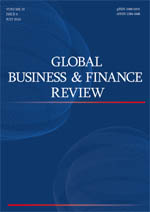
The Effect of Perceived Ease of Use, Benefits, and Risks on Intention in Using the Quick Response Code Indonesian Standard
The Effect of Perceived Ease of Use, Benefits, and Risks on Intention in Using the Quick Response Code Indonesian Standard
- People & Global Business Association
- Global Business and Finance Review
- Vol.29 No.7
- : SCOPUS
- 2024.08
- 110 - 125 (16 pages)
Purpose: This study aims to determine the effect of perceived ease of use, perceived benefits, and perceived risk of using QRIS among people in the city of Semarang. Design/methodology/approach: The population used is all users of the QRIS payment system, the sample size is 200 respondents, with the sampling technique using purposive sampling. The data source used is primary data, with data collection methods using questionnaire. The data analysis technique used is Partial Least Square. Findings: The results of hypothesis testing showed that perceived ease of use had a positive and significant effect on the intention to use QRIS, perceived benefits had a positive and significant effect on the intention to use QRIS, and perceived risk had a negative and significant effect on the intention to use QRIS. Research limitations/implications: The limitations of the study are the sample and the intention factor used. Future research needs to expand its scope and explore other factors such as the availability of IT infrastructure and the quality of service from vendors. Originality/value: The study contributes to TAM theory by focusing on the using of the e-money payment system by Quick Response Code Indonesian Standard (QRIS). Other contribution is test and compare the covariance based structural equation modeling (CB-SEM) software i.e. SmartPLS v. 4, AMOS v. 25, and Lisrel Lisrel v12.4.4.
Ⅰ. Introduction
Ⅱ. Literature Reviews
Ⅲ. Method
Ⅳ. Results
Ⅴ. Discussion
Ⅵ. Conclusions
Ⅶ. Implication
Ⅷ. Limitations and Recommendations
References